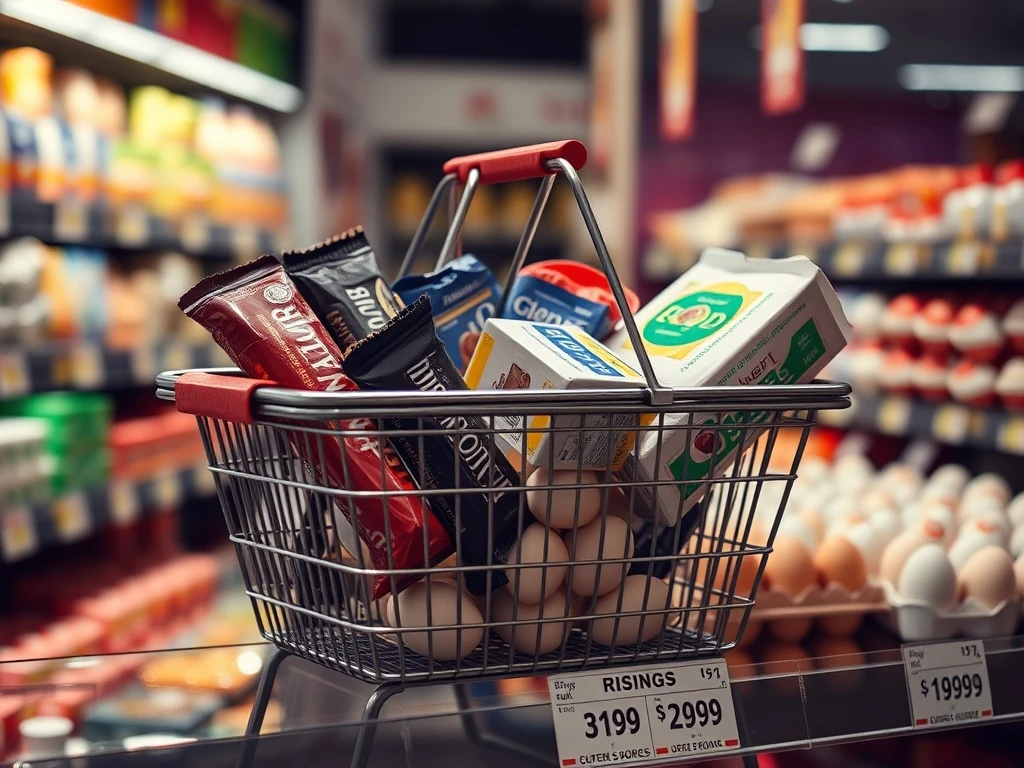UK households face renewed financial pressure as food inflation surges to its highest level in 18 months, hitting 4.2% in August 2025. This dramatic increase, driven by soaring prices for chocolate, butter, and eggs, adds significant strain to family budgets already stretched by the ongoing cost of living crisis.
Understanding the Food Inflation Surge
The British Retail Consortium and NIQ’s Shop Price Monitor reveals concerning trends. Food inflation jumped from 3.5% in July to 4.2% in August. This represents the fastest growth rate since February 2024. Fresh food prices particularly accelerated, climbing to 4.1% from 3.2% the previous month.
Key Drivers Behind Rising Food Prices
Several factors contribute to this food inflation spike:
- Global supply chain challenges affecting commodity markets
- Higher dairy production costs pushing butter and egg prices
- Seasonal weather conditions impacting agricultural output
- Increased operational costs for retailers and producers
Retail Sector Response to Food Inflation
Helen Dickinson, chief executive of the BRC, emphasizes the severity of the situation. She states that retailers continue battling against £7bn in new costs from last year’s budget. Consequently, many stores expand price-matching initiatives and discount programs. However, tax policies and energy bills make containing prices increasingly difficult.
Consumer Impact and Budget Adjustments
Mike Watkins from NIQ notes that returning holidaymakers face budget reassessments. Families must adapt to higher grocery bills as food shopping becomes a primary cost pressure point. The autumn season typically brings additional financial challenges, making this inflation surge particularly concerning.
Future Food Inflation Projections
Retail executives express serious concerns about future trends. More than 60 industry leaders warn of potential 6% food and drink inflation later this year. Without policy intervention and easing global pressures, households may face even steeper price increases.
Frequently Asked Questions
What is causing the current food inflation?
Global supply costs, weather conditions, concluded promotional activities, and rising operational expenses collectively drive the inflation surge.
Which food categories are most affected?
Chocolate, butter, and eggs show the sharpest price increases, with dairy products particularly impacted by production cost rises.
How long will this food inflation last?
Experts predict continued pressure through autumn, with possible escalation to 6% if current factors persist unchanged.
What are retailers doing to help consumers?
Stores expand price-matching schemes, discount initiatives, and promotional activities to mitigate the impact on household budgets.
How does this affect overall inflation?
While non-food goods recorded a 0.8% price fall, overall shop price inflation rose to 0.9% due to food price increases.
What government policies influence food prices?
April’s national insurance contributions increase and potential autumn budget tax changes significantly affect retail operational costs.








